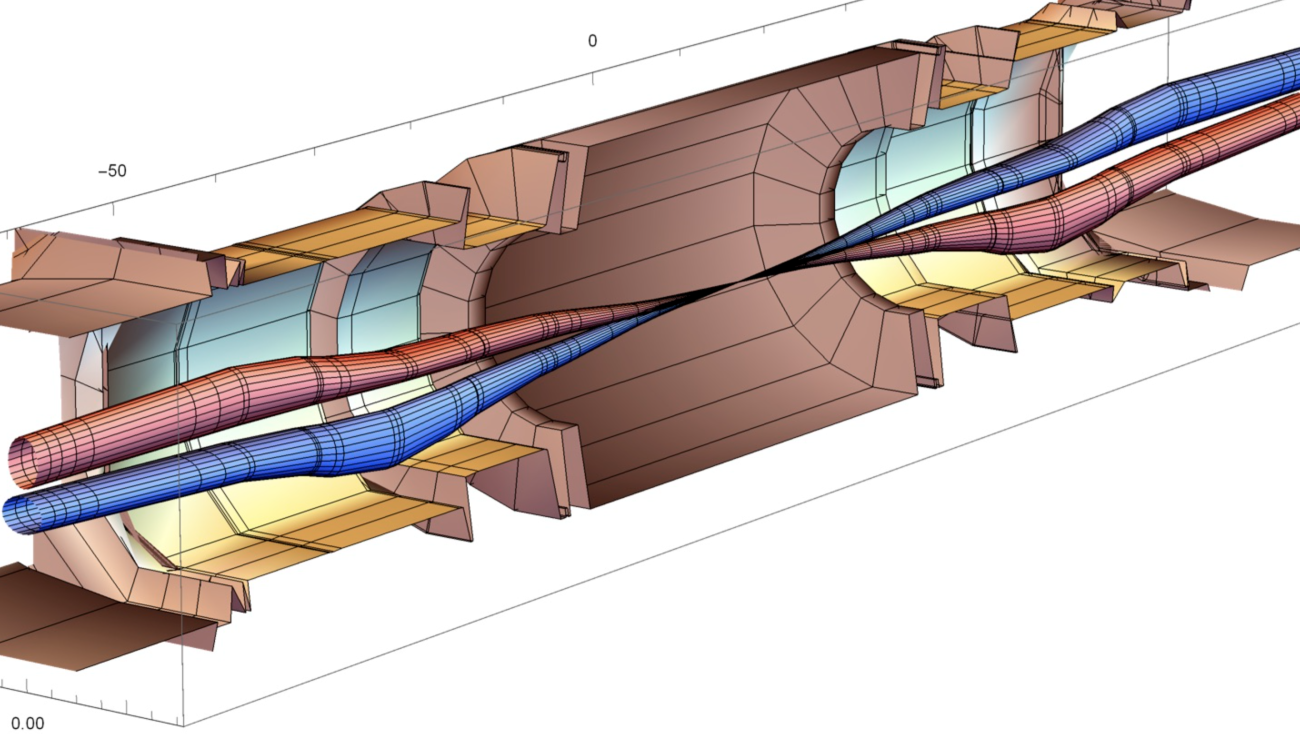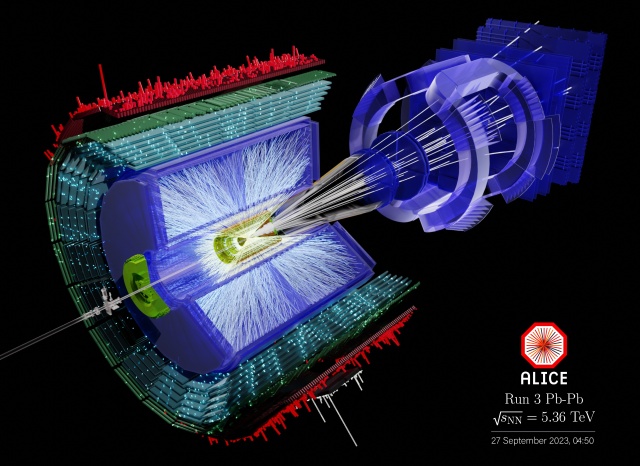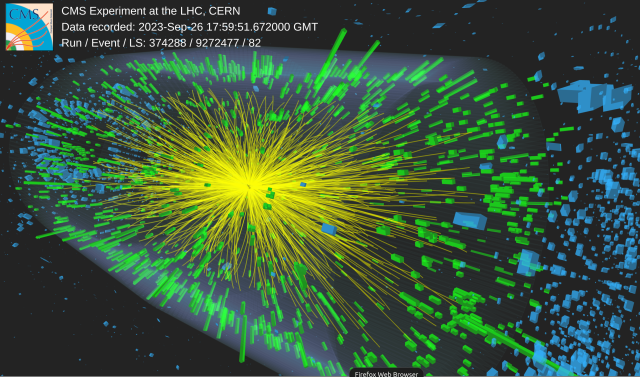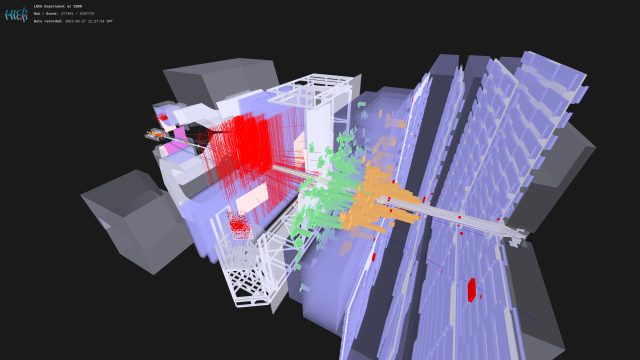Ending the 2023 LHC run with heavy-ion collisions

The LHC schedule for 2023 has been revised following the emergence of a leak in mid-July. The decision was to stop the regular proton running this year and focus on the heavy ion physics that was already scheduled for the year-end. This was complemented by relatively brief special physics runs with protons, such as van der Meer scans to calibrate the luminosity measurements of the experiments and proton collisions with strongly de-focused beams at the interaction points (high beta star) in the experiments, along with a condensed machine-development session.
Following the repair of the inner triplet vacuum leak on 1 August, the LHC completed its cooldown on 22 August. The LHC heavy-ion programme in all four experiments started in the week of 11 September. Compared to previous runs, the lead nuclei will be colliding with an increased energy of 5.36 TeV per nucleon pair (compared to 5.02 TeV previously) and the collision rate has increased by a factor of 10.
They offer the unique possibility to create a unique state of matter, the so-called quark-gluon plasma in which the quarks and gluons typically bound in baryons and mesons are freed and create the QGP. We are convinced that QGP it exists and is created during the heavy-ion collisions at the LHC. However, it is our aim to produce a textbook quality proof. We expect a factor of 100 increase in statistics. That allows to measure rare probes that are not often produced and which can be reconstructed via special decay channels. The last time we collided heavy-ions was in 2018, five years ago, and since then, we have squeezed out all the physics included in these data. This is why we need new data, as we have many open questions from the previous run.
The ongoing Run3 heavy-ion programme is expected to bring significant advances in our understanding of quark-gluon plasma. In addition to the improved parameters of the lead-ion beams, significant upgrades have been performed in the experiments that detect and analyse the collisions. ALICE, the experiment which primarily focuses on studies of quark-gluon plasma, is now using an entirely new mode of data processing storing all collisions without selection, resulting in up to 100 times more collisions being recorded per second. In addition, its track reconstruction efficiency and precision have increased due to the installation of new subsystems and upgrades of existing ones. CMS and ATLAS have also upgraded their data acquisition, reconstruction and selection infrastructure to take advantage of the increased collision rates. ATLAS has installed improved Zero Degree Calorimeters, which are critical in event selection and provide new measurement capabilities. LHCb, in addition to performing studies of lead-lead collisions with an upgraded tracking system, is preparing a unique programme of fixed-target collisions of lead nuclei with other types of nuclei using its unique SMOG2 apparatus that allows various gases to be injected into the LHC collision area.

Event display showing a lead-lead collision in the ALICE detector. (Image: ALICE)
Studies of quark-gluon plasma in this heavy-ion run focus on rare processes such as the production of heavy quarks, quarkonium states, real and virtual photons and heavy nuclear states. The increased number of collisions is expected to allow measurement of the temperature of the plasma using thermal radiation in the form of photons and electron-positron pairs. Hydrodynamic properties of the near-perfect liquid state of matter will thus be measured in greater detail and “tomography” using particles such as the charm or beauty quarks that are produced in the initial phase of the collision, pass through the plasma and are detected afterwards. All these measurements will be far more precise than before. Data taking for the run is complete and a total integrated luminosity of 2.16 inverse nanobarns could be reached. In addition, the experiments will probe ultra-peripheral collisions of heavy ions, in which one beam emits a high-energy photon that strikes the other beam. These collisions will be used to probe gluonic matter inside nuclei and to study rare phenomena such as light-by-light scattering and τ-lepton photoproduction.

Event display showing a lead-lead collision in the ATLAS detector. (Image: ATLAS).

Event display showing a lead-lead collision in the CMS detector. (Image: CMS)
Originally scheduled for four weeks, this lead ion run was extended by an additional week. The last lead ion beams of 2023 were dumped on Monday 30 October at 6 a.m. marking the start of winter stop for the entire CERN accelerator complex. Following a successful data-taking period by all LHC experiments, anticipation is now growing as scientists around the world are working to analyse the data.

A lead-lead collision recorded in the LHCb detector. (Image: LHCb)
The resumption of beam operation was not only rewarding for the physics community, but also for all the dedicated people who have worked hard and thought out-of-the-box to get the unprecedented vacuum leak repaired. By avoiding the standard procedures of warming up the whole sector, the repair was made quickly, enabling the lead ion run to take place. This accomplishment underscores the strength, quality and innovative spirit of CERN's scientific and technical teams.
